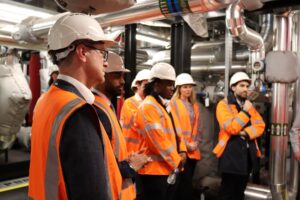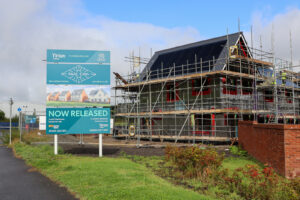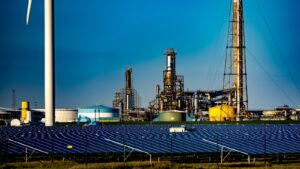Integrated systems and data analysis can play a key role in reducing air pollution, says the Managing Director of Siemens Mobility’s Intelligent Traffic Systems business in the UK, Wilke Reints.
From the phone in your pocket to the latest video streaming services, smart technology is playing an increasingly large role in all our lives, which is only set to grow as the systems themselves become more and more sophisticated.
That technology is also propelling huge changes in areas that many of us take for granted, like traffic management systems.
The days of traffic lights simply changing colour on a loop are over. Modern systems can help monitor and control traffic flow, as well as gather important information on the types of vehicles that use the nation’s roads, behaviour patterns and so forth.
There are many applications for that data and smart traffic management systems, including helping to improve air pollution and implement Clean Air Zones, as Siemens Mobility’s Intelligent Traffic Systems Managing Director in the UK, Wilke Reints, explains.
‘Without data it would be difficult to find the right measures or solutions to improve pollution levels’ he tells Air Quality News. 
‘But it is not just about having isolated data sets. The seamless integration of that data is as important and necessary. You need to put all the data into one system and then try to identify a pattern, which will then help you to find the right tools to improve the situation in your town or city.’
However, different towns and cities require different solutions. For larger areas, smart technology can help with the implementation of a Clean Air Zone, which might not be as effective in smaller towns and villages.
Mr Reints says it is important to ‘try to identify where your problems are’.
‘That is the single most important thing and for that, you need data analysis and the seamless integration of various systems. You should simulate first and then build the system, rather than the other way around.
‘There are different ways you can make people aware of their journey and how it contributes to the air pollution around them. One is providing direct information to people who need to understand what their travel options are and why certain measures are in place. For example, if you introduce a greener route but nobody knows it exists, you will carry on using the older, more congested route.’
‘The other factor is to analyse data and manage traffic flows in a way that is balanced with overall targets. Whilst it may not be possible to avoid all congestion in a city there are some conditions you can avoid. If you have smart traffic controllers, where all the information gets collected into a centralised system, a more constant flow is possible and travel times become more reliable.
‘A good indicator for a traffic management system is that the travel times are reduced and stable. The more consistent the travel times are, the more balanced the system is.
‘What we need to do is have the right traffic management in place for certain groups of road user. For example, in busy cities such as London pedestrians may have a higher priority.’
While Clean Air Zones may work in larger towns and cities, Mr Reints says they may not be the best option for smaller towns and villages, who will need to closely examine the type of traffic in their specific areas.
For example, he says the installation of rapid EV chargers may not be as necessary in small villages compared to motorways, where EV drivers need a quick top up on longer journeys. ‘You need to have three layers of EV charging infrastructure and they go hand in hand,’ he explains.
‘The first one is for the long-distance traveller who requires a rapid charger. They need their cars charged quite quickly, which is a challenge in itself because service stations along our motorways don’t necessarily have the energy capacity for this right now.
‘But from a planning perspective, you need to enable people to travel longer distances by EV. If you don’t do that, people will not embrace these types of vehicles, or it will just be a secondary car, and they will not use it as much if they struggle to charge it on their journey.
‘So, you need other layers of charging, either at home or on the street, through street light chargers at the curb for example.’
With more EVs on our roads than ever before and public demand growing for action on tackling air pollution, the direction of travel is clear for many local authorities. The infrastructure of tomorrow will have to take into account the environment, as well as the needs of all road users. Smart technology and data analysis could help join the dots to ensure a more seamless vision of the future.
This article first appeared in the April Air Quality News magazine, which is available to view here.

















Leave a Reply